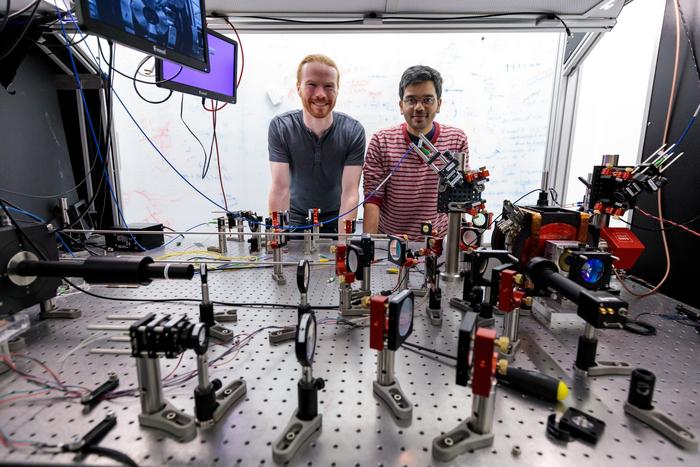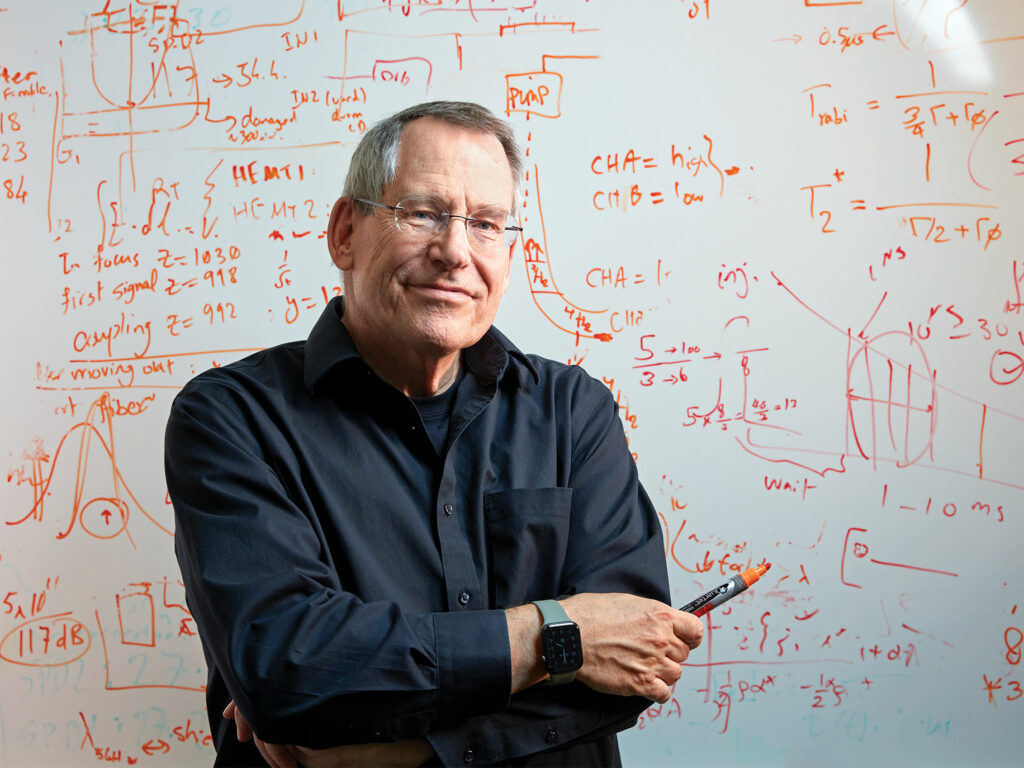World Quantum Day.
I like the sound of that.
As a writer for The Quantum Insider, I report a lot on local quantum ecosystems, regional quantum ecosystems, state quantum ecosystems, national — and on and on.
Don’t get me wrong, those communities and those projects to build local quantum communities are vital. Without these initiatives and organizations, the transformative power of quantum technologies would likely remain untapped, particularly as we are in this nascent stage of developing quantum. But creating a strong global quantum ecosystem will not diminish local quantum ecosystems — in fact, a tide to build a world quantum community will lift all local boats.
So, let’s take some time World Quantum Day to consider the power and pure potential of the worldwide quantum ecosystem—and consider ways we can merge these local initiatives to reinforce this rapidly growing, quickly maturing global community that can deliver the benefits of quantum technologies to science and society.

We don’t have to stretch our imaginations that much because world quantum is a reality right now. But it might be important to consider the power of global research collaborations — and just how limitless this potential is. Here are just a few international collaborations in various aspects of quantum science based on a random jaunt through Google Scholar:
Evidence for Chiral Graviton Modes in Fractional Quantum Hall Liquids
This study explores a fascinating aspect of quantum physics known as chiral graviton modes (CGMs) within a unique state of matter called fractional quantum Hall (FQH) states. Researchers have now, for the first time, detected these elusive CGMs by observing specific vibrations or waves among electrons when they shine circularly polarized light (light that spirals as it moves) on an ultra-cold electronic system. They found that these vibrations have a preferred direction of swirl (chirality) that changes with the density of electrons. This discovery is a big deal because it confirms a key theoretical prediction about the quantum behavior of electrons in FQH states and helps us understand how quantum geometrical properties influence the behavior of electrons in these exotic systems.
Researchers include scientists from China, US and Germany.
Progress on Superconducting Materials
This study, which includes researchers from the US and Germany, focuses on advancements in superconducting materials for Superconducting Radio Frequency (SRF) applications, crucial for both accelerator physics and quantum information science. It showcases the collaborative effort among an international group of researchers working to optimize niobium (Nb) materials to enhance the efficiency and performance of SRF cavities.
Realization of a Fault-Tolerant Quantum Algorithm on a Superconducting Quantum Processor
The study, published in the journal Nature, describes an international collaboration between researchers from the United States, Japan, and Germany who demonstrated the implementation of a fault-tolerant quantum algorithm on a superconducting quantum processor. This represents an important milestone in the development of practical quantum computing.
Room-Temperature Quantum Coherence and Entanglement in Two-Dimensional Materials
This study was published in “Nature Materials”. This study involved researchers from several institutions across multiple countries, including the United States, South Korea, and Germany. The collaboration brought together experts from Stanford University, the Korea Advanced Institute of Science and Technology (KAIST), and the Technical University of Munich, among others
Spin-2 Partner in Particle Collisions
This research explores the production of a new particle suspected to be the spin-2 partner of another quantum entity during particle collisions. It delves into the quantum numbers and potential decay channels of this novel structure, marking a significant leap in quantum physics research. There is a good chance that without international work like this our comprehension of the quantum realm would be greatly diminished.
The team of researchers include scientists from China, Spain, Germany, Slovenia and Portugal.
In fact, while not a majority of research produced, these global collaborations represent a sizable portion — possibly almost a quarter — of total research partnerships. The National Science Foundation (NSF) reports, for example, that the percentage of science and engineering articles produced with international collaboration increased from 18% to 23% from 2010 to 2020. In quantum science, it might even be higher.
We know one reason that scientists engage in international partnerships — they’re successful.
Global collaborations are also deeply etched in the fabric of the scientific enterprise — we encourage our graduate, doctoral and post-doctoral students to travel to other institutions. This tradition is hundreds of years old and likely was prompted by a desire for knowledge disseminations. That dissemination of brain power still works today — even with all the remote opportunities for learning and knowledge gathering.
But, for quantum science, there may be another reason: global research is absolutely necessary. A relatively small number of scientists are engaged in quantum research — and they are spread all over the world. In other words, the global quantum aspect of the global quantum workforce is a redundant term.
This World Quantum Day, let’s temporarily put aside ideas of quantum valleys and quantum alleys, quantum highways and quantum islands, and think about how we can intelligently unite friendly nations to build a global quantum ecosystem that amplifies the power of all these quantum ecosystems while we strengthen our resolve to manage the power of quantum responsibly and decrease the timeline of when the potential of quantum is delivered to society.
Here are a few ideas we’ve come up with — but it’s certainly not an exhaustive list.
Generosity with Talent and Knowledge
- Exchange Programs: Encourage talent exchange programs between institutions, companies and research groups globally. These can include internships, visiting researcher positions and sabbaticals.
- Open-Source Contributions: Participate in and contribute to open-source quantum computing projects. This not only helps with the advancement of the field but also puts local talent on the global map. Quantum Open Source Foundation has a great list and the Unitary Fund is a great place for more news and information.
Global Networking and Partnerships
- Ecosystem Connectors: Local, regional and national ecosystems should find ways to connect to each other within their own spheres — while linking with the broader local, regional and national ecosystems across the world.
- Attend and Host International Conferences: Attend international quantum technology conferences, workshops, meet-and-greets and symposiums. Hosting such events can also attract global attention to local ecosystems.
- Network Remotely: Busy startups can’t always be jetting across the world, but remote networking sessions can fill an important gap between complete isolation and international conferences.
- Strategic Alliances: Form strategic alliances with leading institutions, labs and companies around the world to collaborate on research, development, and educational initiatives.
Idea and Resource Sharing
- Collaborative Research Projects: Always be on the lookout for collaborative research projects that bring together researchers from different parts of the world to work on our common goals.
- Knowledge Repositories: Create and contribute to global knowledge repositories, including preprint servers and open-access journals focused on quantum technology.
Promoting ‘Collabetition’ (That’s collaboration and competition merged together, in case that looks strange)
- Joint Ventures: Encourage joint ventures that pool resources, knowledge and networks from competitors to tackle large-scale quantum projects. You may be surprised just how much your so-called competitors are actually collaborators.
- Shared Challenges and Competitions: Participate in and sponsor global quantum challenges and hackathons, which can foster a spirit of collaborative competition. The Airbus and BMW Quantum Computing Challenge 2024 and X Prize are just two examples.
Education and Outreach
- Global Quantum Education Platforms: Develop and contribute to online education platforms that offer courses, seminars, and webinars on quantum technology to a global audience.
- Public-Private Partnerships: Engage in public-private partnerships that leverage government, academic, and industry resources to promote quantum technology development on a global scale.
Policy and Standardization Efforts
- Adopting Technical Standards: In technological communities, it’s not good fences that make good neighbors; it’s good standards that make good neighbors. Standards are something the entire global quantum community should advocate.
- Engage in Policy Advocacy: Work towards global standards and policies that facilitate the free exchange of quantum research and technologies.
- Ethical Frameworks: Contribute to the development of ethical frameworks for quantum technology research and application, ensuring responsible global development.
Investment and Funding
- Global Investment Funds: Participate in or establish investment funds focused on supporting quantum technology startups and projects worldwide.
- Crowdfunding-Crowdinvesting Platforms: Here’s an idea that might be a bit out-there. But crowdfunding and crowdinvesting platforms are seeing great success in other industries and fields. Utilize crowdfunding platforms to support quantum projects with global impact, engaging the wider community in funding initiatives.
Those are just some ideas! As always, we’d love to hear your feedback.
For more market insights, check out our latest quantum computing news here.




















